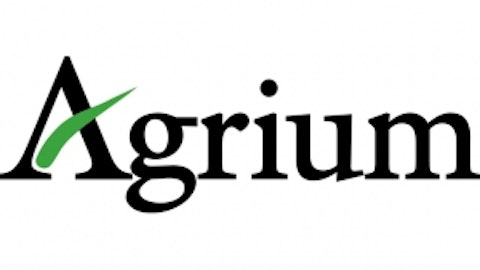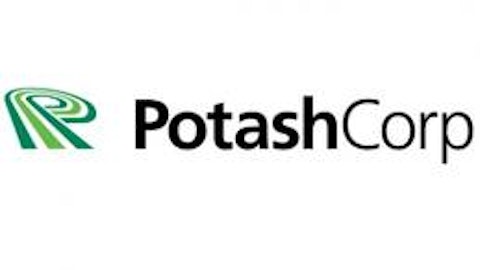Another company experiencing growth in the agricultural chemicals industry is Monsanto Company (NYSE:MON). In recent weeks, the company reported that its seeds and genomics segment sales for the fiscal second quarter of 2013 were $4.3 billion. This represents an increase of $422 million over the same period in 2012. For the first six months of the current fiscal year, this segment’s sales are up $643 million over the comparable prior-year period.
Moreover, Monsanto Company (NYSE:MON)’s agricultural productivity segment net sales in the second quarter increased $302 million over the same period in 2012. Monsanto is also experiencing growth from the sales of crop protection products, as well as lawn-and-garden herbicide products.
Investors should note the company’s strong net sales performance for the second quarter. Net sales increased $724 million, or 15%, to $5.5 billion in comparison to the year ago same quarter. Net sales increased $1.2 billion, or 17%, for the first six months of 2013.
Are their caveats to consider as an agribusiness investor? There are, and product demand is one thing investors must evaluate. Consider the global demand for potash; lower demand here has hurt agribusiness stalwart Potash Corp./Saskatchewan (USA) (NYSE:POT). Limited worldwide potash buying resulted in lower prices in the 2012 fourth quarter. Mr. Bill Doyle, Potash Corp./Saskatchewan (USA) (NYSE:POT) president and CEO, stated in a press release on Jan. 31:
Our fourth-quarter results were adversely affected by weaker performance in all three nutrients as global fertilizer markets paused in the absence of significant immediate needs and amid lack of direction, particularly in phosphate and potash.
However, concerning the company, Jake Mann in his Motley Fool Blog Network posting of March 25 noted:
“The world population continues to grow, which increases the demand for agricultural products; … many macro investors are bullish on farmland, agriculture, and related investments. Potash … is one company often used as an example of a potential beneficiary of this thesis.
I tend to agree that PotashCorp is a potential beneficiary of this demand. The company noted in its Q1 2013 market analysis report that potash shipments to the North American market for the first half of the 2012-2013 fertilizer year, a period that extends from July to December, were a little higher than the historical average. A strong fall application season and low distributor inventories at the beginning of the fertilizer year drove this demand.
Important for investors to note is that PotashCorp expects that demand will remain strong for the rest of the fertilizer year because of “favorable crop economics, prospects for high planted area in 2013 and limited distributor inventory carried into the year” (PotashCorp Q1 2013 Market Analysis Report – March 20).
Furthermore, PotashCorp gave its outlook at the end of January for the potash market. It expects demand to gain momentum this year. PotashCorp foresees worldwide potash shipments for 2013 of between 55 million and 57 million tonnes. This would be a strong increase over the approximately 51 million tonnes shipped last year.
I like the above-mentioned stocks because these companies have the resources and expertise to take advantage of the expected continued rise in worldwide demand for agricultural products. As they help farmers provide for this demand, these companies (and their shareholders) should reap the benefits of their initiatives.
A global food crisis is at the doorstep, if not already through the door. Agribusiness companies have their role to play. They can help feed the world, and the accounts of their investors.
The article Food for Thought originally appeared on Fool.com and is written by Michael Ugulini.


